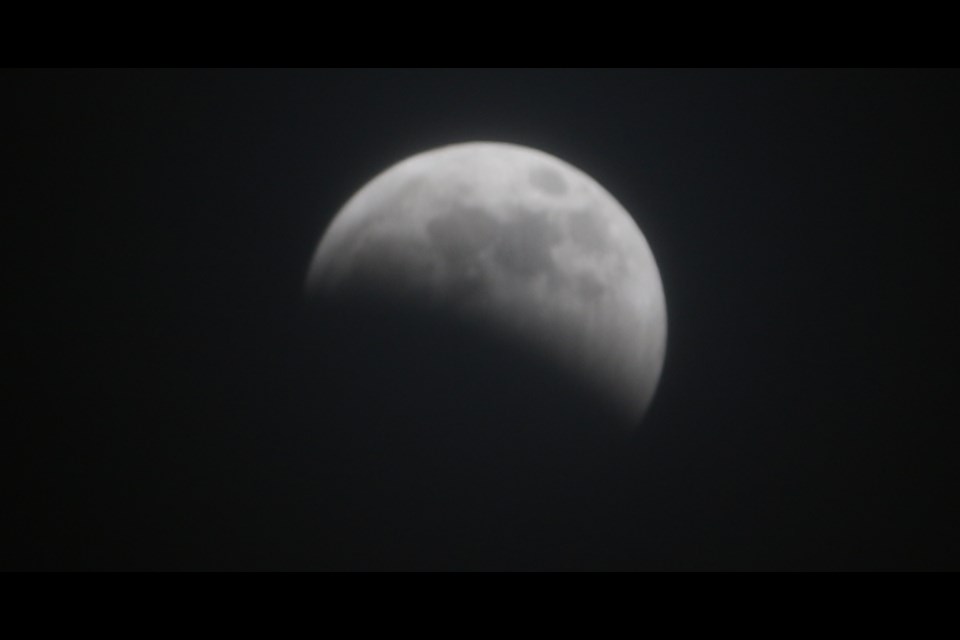A total lunar eclipse was visible from Humboldt.
The eclipse began Jan. 20 at 9:33 am and ended at 12:50 am the next morning, with the moon completely covered between 10:41 pm and 11:43 pm. At the same time, the moon was ever so closer to Earth and appear slightly bigger and brighter than usual — a supermoon.
"This one is particularly good," said Rice University astrophysicist Patrick Hartigan. "It not only is a supermoon and it's a total eclipse, but the total eclipse also lasts pretty long. It's about an hour."
If the skies are clear, the entire eclipse would be visible in North and South America, as well as Greenland, Iceland, Ireland, Great Britain, Norway, Sweden, Portugal and the French and Spanish coasts. The rest of Europe, as well as Africa, would have partial viewing before the moon sets. Some places will be livestreaming it, including the Griffith Observatory in Los Angeles.
During totality, the moon looked red in some places in the world because of sunlight scattering off Earth's atmosphere. That's why an eclipsed moon is sometimes known as a blood moon. In January, the full moon is also sometimes known as the wolf moon or great spirit moon.
So informally speaking, the upcoming lunar eclipse was a super blood wolf — or great spirit — moon.
Due to the somewhat cloudy sky, the red light wasn't visible in Humboldt.
In North America, the eclipse began relatively early Sunday evening, making it easier for children to stay up and enjoy the show.
Parents "can keep their kids up maybe a little bit later," said, Hartigan, who will catch the lunar extravaganza from Houston. "It's just a wonderful thing for the whole family to see because it's fairly rare to have all these things kind of come together at the same time."
"The good thing about this is that you don't need any special equipment," he added.
Asia, Australia and New Zealand are out of luck. But they had prime viewing last year, when two total lunar eclipses occurred.
The next total lunar eclipse won't be until May 2021.
As for full-moon supermoons, this will be the first of three this year. The upcoming supermoon will be about 222,000 miles (357,300 kilometres) away. The Feb. 19 supermoon will be a bit closer and the one on March 20 will be the farthest.



